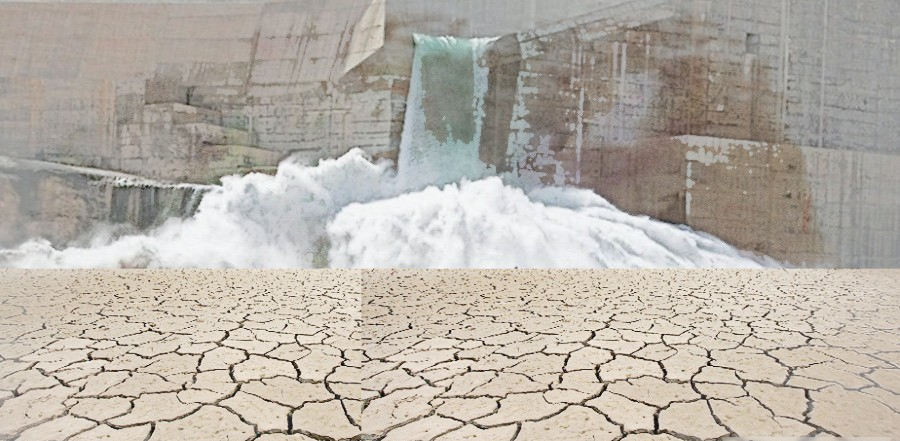In the last week of July 2021, Khuzestan, this oil and energy-rich province, witnessed widespread protests about water shortages. Apart from Ahvaz, Khuzestan’s capital, large numbers protested in the cities of Shush, Dasht-e Azadegan, Susangard, Hoveyzeh and Shadegan. These are cities in the deprived areas of this province in terms of development. During the first two nights of the protests, Qassem Khediri and Mustafa Naimavi were shot dead by security agents, and another young man named Ali Mazraeh, like many other youths was shot by officers and severely wounded as a result.
The water crisis in Khuzestan is almost entirely due to the ’dam-building mafia’ in the Islamic Republic. The two dam construction projects ’Gotvand’ and ’Karun 3’ are among the most catastrophic projects of the Iranian government in regard to their environmental effects, which, apart from Khuzestan, have also a severe impact on the surrounding cities. The construction of Gotvand Dam, which is the most expensive dam in Iran, started in the 70’s during the presidency of Ali Akbar Hashemi Rafsanjani and was inaugurated 14 years later by Mahmoud Ahmadinejad. This dam, which supplies water to several provinces, was located near the Gachsaran salt mine. Many environmental activists warned against building this dam next to the salt mine. Just a few days after its opening, 250 million tons of salt were dissolved in the Karun River. The building of the dam has been an environmental disaster in several ways:
One: The farmlands that received two thirds of their water from Karun dried up. Dates are the most important agricultural product of Khuzestan. One million date palm trees have withered.
Two: Thousands of landless farmers have been turned into poor marginalized residents of urban peripheries.
Three: The increase in fine dust pollutants, which the launch of the Gotvand Dam started, has now become a permanent crisis
Four: Due to the salinity of Karun water, most other farmers have also lost their lands and become unemployed in the absence of mechanized agriculture.
Five: The salinity of the water has led to the rusting of the dam turbines. Now, even the generation of electricity through these dams is not possible.
Six: 63 villages near the Karun 3 Dam were submerged, and 12,000 villagers were displaced.
Seven: 28 villages were besieged by water dams, and their businesses were destroyed without any follow-up or acceptance of responsibility by the Islamic Republic.
Eight: With the COVID-19 pandemic and the incompetence of the Iranian government in vaccinating the population, the people of Khuzestan are facing even higher death rates. In the meanwhile, temperatures are above 50 C, and there are water shortages; a situation that has caused the death of farmers’ livestock due to dehydration.
Gotvand and Karun 3 dams are made by Sepasad, a contractor affiliated with the military and ideological organization of the Islamic Revolutionary Guards Corps (IRGC). The dams are technically consulted on by “Mahab Quds”, a privileged company affiliated with the “Astan Quds Razavi”, the custodian of the Shiite imam shrine in Mashhad.
With the second highest unemployment rate in the country, the people of Khuzestan took to the streets, not only to protest the lack of drinking water, but also to protest the ecological destruction of the region, widespread poverty and unemployment in an oil and energy rich land, the state’s continuous looting, and the central government’s permanent repression. Women, men, and even children of the province have lived under the dark shadow of deprivation, lack of development budgets, and “a perpetual state of war” for years. The political water crisis in Khuzestan is the result of the dam-building mafia of the Islamic Republic and the neoliberal policies of the ruling governments. They have merely destroyed nature and turned it into money for decades. The Khuzestan protests are the resistance against 43 years of systemic discrimination and repression by the Islamic Republic, of which the recent water crisis is just one example.



Comment here